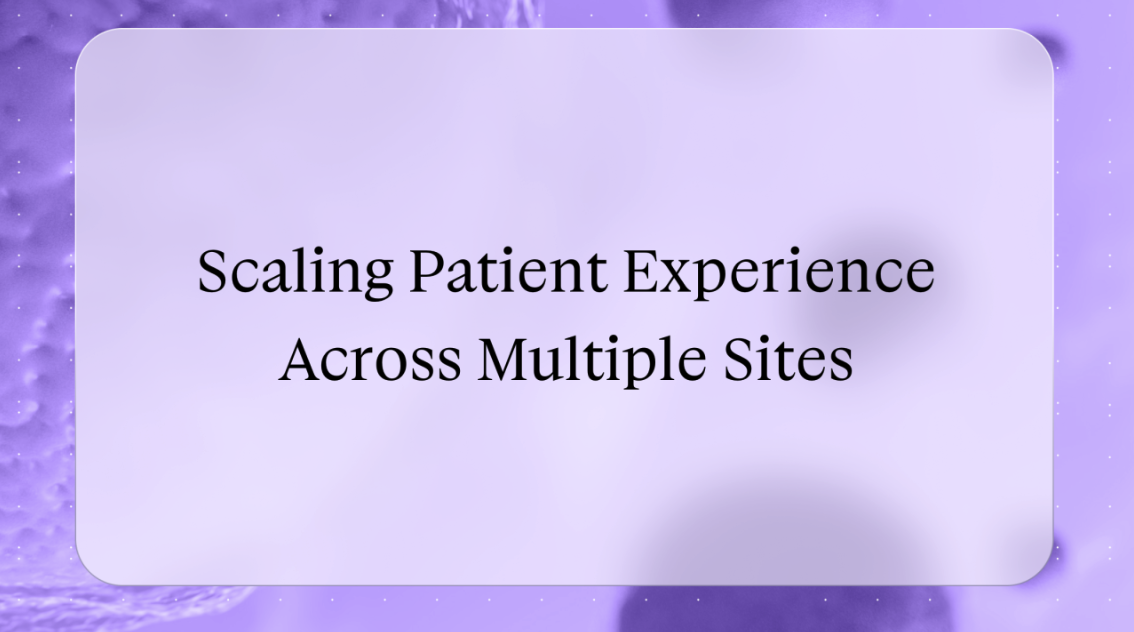Digital transformation in fertility: Making sense of data in a multi-site clinic
.png)
As fertility networks expand, the complexity behind the scenes grows fast.
New clinic locations. New staff. More patients. More systems. More data.
In theory, this should be a good thing, more capacity, more insight, more consistency across sites. But in practice, many multi-site fertility clinics are struggling to turn that data into meaningful, joined-up decisions. And that’s a problem for operational performance and patient care.
So what’s going wrong and what does good look like when it comes to managing clinical and operational data across multiple locations?
1. More Clinics = More Silos (Unless You Actively Prevent It)
One of the biggest challenges in multi-site fertility care is fragmentation.
Each clinic may have its own workflows, its own EMR set-up, its own admin processes. That might work on a local level- but when you’re trying to run a joined-up network, silos slow everything down.
This makes it difficult to:
- Track patient progress consistently
- Compare performance across sites
- Standardise care protocols
- Spot early signs of bottlenecks, errors or missed steps
Digital transformation in multi-site fertility care means building the infrastructure to connect sites- not just replicate them.
2. Without Visibility, You’re Always Playing Catch-Up
Operations leaders can only solve the problems they can see.
If you don’t have real-time data on how many patients are waiting for appointments, where patients are dropping out of the journey, or which sites are facing staff capacity issues, it’s almost impossible to make proactive decisions.
Instead, clinics end up reacting to complaints, delays, or inefficiencies after they’ve already caused disruption.
A strong digital foundation enables operations teams to get ahead of issues—not just clean up after them.
3. There’s No Such Thing as 'One Version of the Truth' (Yet)
In most fertility networks, there’s no single, centralised system for data.
Consultants might keep records in clinic-specific systems. Nurses might record notes separately. Lab teams might use standalone spreadsheets. Managers track their own KPIs in siloed dashboards.
This creates confusion and mistrust. Different teams end up working from different information. Key updates get missed. And operational decisions become harder to justify because there’s no agreed source of truth.
Digital transformation means unifying data streams and building systems where information flows in real time, not in end-of-week reports.
4. Staff Need Context, Not Just Data
Even when data is available, it’s not always usable.
A folder full of spreadsheets is still a folder full of spreadsheets. What frontline teams need is visibility that’s:
- Filtered – relevant to their role and site
- Timely – not buried in last month’s stats
- Actionable – tied to clear next steps
Good systems help people connect the dots between data and decisions. Bad systems overwhelm teams and create more admin without solving real problems.
5. Patients Feel the Impact When Data Isn’t Aligned
This isn’t just an operations problem—it’s a patient experience problem.
When a patient moves between sites, or when they’re in contact with different departments across their journey, they expect a seamless handover. They expect their information to follow them. They expect consistency.
Without integrated data, this breaks down:
- Messages get lost
- Instructions are repeated
- Treatment plans get delayed
- Patients lose confidence
A connected system makes care safer, more joined-up, and less stressful for everyone involved.
What Good Looks Like in a Multi-Site Setting
Digital transformation in multi-site fertility care means:
- One central system for secure patient data
- Real-time visibility of performance across all locations
- Role-specific dashboards for clinical and ops teams
- Clear protocols that are followed and tracked
- Seamless communication and handovers across departments and sites
It’s not about collecting more data. It’s about making data work better so decisions are faster, safer, and more strategic.
At Salve, we partner with clinic groups to help them move beyond fragmented workflows and disconnected insights. Because better data = better care.

.png)



.jpg)





